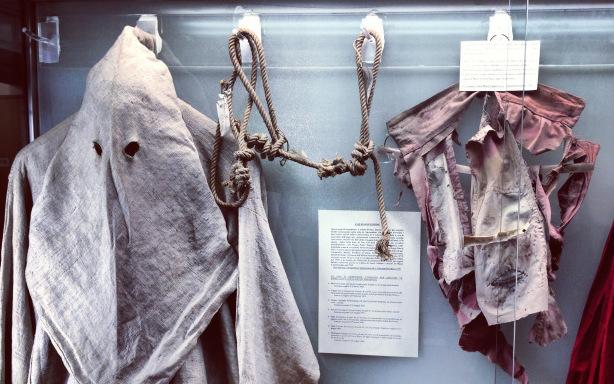So you’ve tossed a coin into the Trevi Fountain, climbed the Spanish Steps and stood in awe at the scale of the Pantheon. What do you do next?
Why not try something completely different, and visit the Museo Criminologico (criminology museum) situated on Via del Gonfalone 29. The museum, which was founded in 1931 and houses a unique collection of all things crime-related, was originally only open to government officials and the Italian police forces; however, in 1994, with permission from the Italian government, the federal prison administration who operate the museum opened the doors to the public.
The collection was first assembled back in 1873 for the training of prison guards, and the vastly detailed body of work ranges from investigative methodology to the more grisly of artefacts, such as prisoner restraints and the infamous Milazzo Cage. The collection also has on display items that have been made by prisoners as part of their vocational and rehabilitation programs.
The museum is divided into three sections. The first is an historic documentation of penal practices; the collection contains instruments of capital punishment including whipping benches, torture chairs and barbed collars. There’s also a reproduction iron maiden and axes designed for the sole purpose of beheading.
It’s in this section that the grisly Milazzo Cage is on display, made of iron and in the shape of a human. The cage that to this day still contains a human skeleton was found buried inside a wall at Sicily’s Milazzo prison on 17 February 1928.
This room also houses the historically important red robes of Giovanni Battista Bugatti (1779–1869), known as Mastro Titta. Bugatti was the longest-serving executioner of the Papal States, working from 1796 up until he was officially retired at the age of 85.
The second section of the museum is devoted to 19th-century crime. Here you’ll find early forensic techniques and studies in criminal anthropology. There’s also a section dedicated solely to brigandage and early gang culture.
On display in this section is the gun used by Gaetano Bresci to assassinate King Umberto I: Bresci was the first person to not be executed for regicide and following the repeal of the death penalty in 1889, he was sentenced to life imprisonment; however, this was cut short after he was found dead in his cell less than a year after sentencing. The cause of Bresci’s death remains unexplained.
Also on display are the weapons used in the politically fuelled argument that led to a duel between rival politicians, Count Ferruccio Macola, editor of the Journal of Venice, and poet Carlo Emanuele Felice Cavallotti. On 6 March 1898, the duel took place and Cavallotti, who had accused Macola of being a liar, was killed.
The final section houses a collection devoted to 20th-century crime, with exhibits ranging from evidence of espionage and organised crime, including high profile cases of art thefts and gambling fraud. There’s also an area dedicated to Italian murders and murderers from the mid-1940s and onwards.
The museum’s opening hours are:
Tuesday and Thursday, 9.00 am – 1.00 pm and 2.30 – 6.30 pm
Wednesday, Friday and Saturday, 9.00 am – 1.00 pm.
For more details call +39 06 6889 9442![]() or visit http://www.museocriminologico.it/
or visit http://www.museocriminologico.it/









